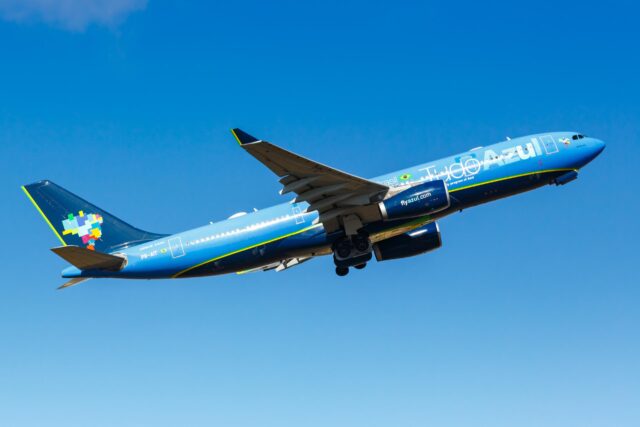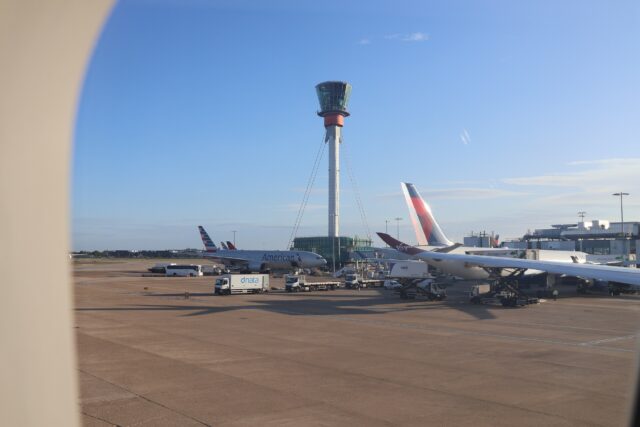“Premium leisure” passengers are driving post-pandemic transatlantic airline recovery

November 1, 2025

Several of the world’s most lucrative airline routes originate in the United States. This is just one of the reasons why the transatlantic market is so sought-after.
A combination of densely populated areas, plenty of business demand and mature infrastructure makes it a crucial market for many airlines on both sides of the Atlantic Ocean. Europe’s main airline groups – Air France-KLM, International Airlines Group, and the Lufthansa Group – all identify the transatlantic market as one of, if not the most important.
Similarly, American Airlines, United Airlines and Delta Air Lines have all focused on increasing capacity to the region, particularly the latter two. With large fleets and strong hub networks and joint venture partners, they have been able to capitalise on the demand that showed no signs of slowing. That was, of course, prior to two major industry-altering events.
The first was the COVID-19 pandemic. People stopped travelling, and it wasn’t until a few years after that that the skies became busier. Crucially, demand from business travellers – the segment that typically drives a significant portion of a legacy airline’s revenue – nosedived. And it has not recovered.

The second impact was that of political and economic uncertainty, driven by US President Donald Trump in the wake of Liberation Day tariffs. The most price-conscious travellers have strayed away from flying to the US, leaving economy class cabins emptier than usual. And yet, US-Europe flights reached record highs this year despite the uncertainty.
Somehow, though, premium cabins have remained full. And that’s because of a new market segment alongside the price-conscious economy passengers with the lowest willingness to pay, and the higher-yielding corporate customers: Premium leisure.
The “post-pandemic new normal”: Premium leisure travellers are driving recovery
In American Airlines’ third-quarter earnings call last week, the airline’s Chief Strategy Officer, Stephen Johnson, spoke of a “post-pandemic new normal” in which premium cabins are only partially filled by business travellers. Now, leisure passengers who are willing to pay more for a more comfortable product make up the majority, the executive explained.
“Premium has always been driven by business, and there remains a component of that that is business demand,” he clarified. “But business doesn’t always let its employees fly in premium. And so really, what we’re seeing, I think, is a renaissance or maybe a new beginning for premium leisure.” The airline estimates that roughly 65% of its premium cabins are now filled with this type of passenger.
“We’re designing better products. We have easier ways and super-simple digital ways to upgrade, and lots of opportunities to upgrade on a wallet-friendly basis. It’s really, I think, becoming just a really important and really exciting part of our business,” Johnson continued.

American Airlines is not alone in focusing on attracting higher-yielding leisure passengers with additional investment. With economy class bookings down overall, and prices being slashed to encourage bookings, the transatlantic market has taken a hit. Airlines on either side of the pond are having to shift focus to keep their routes profitable – or at least as profitable as they might have been before.
Johnson described premium revenues as being “strong all year long, really not faltering notwithstanding any of the economic uncertainty we went with.” He added that that has been “very difficult” on revenues from its economy cabin and demand from its most price-sensitive customers.
Airlines are banking on premium leisure
This is the case for all three US airlines. At the start of September, Delta Air Lines said it was “disappointed” in its Summer 2025 transatlantic performance but clarified that the concerns were “all in Main cabin.” Instead, it said that things were looking positive moving into the fourth quarter as bookings for corporate and “high-yield leisure” were performing “incredibly well.”
Similarly, while United’s transatlantic yields did decline, an increased focus on premium leisure has helped it maintain strong results in an uncertain year. In fact, the airline’s Chief Commercial Officer, Andrew Nocella, said in an October earnings call that “the quality of [the yield of] premium leisure business often exceeds that of traditional corporate business” in its domestic market. He added that this is not yet the case globally, but premium leisure “continues to accelerate.”
In Europe, Air France admitted that it was cutting fares on transatlantic flights earlier this year to fill its planes. It also said, though, that premium leisure played a key role in its performance, in spite of economic uncertainty this year. Group CEO Benjamin Smith told Bloomberg in March: “France is still a very, very exciting destination for many, especially Americans, and we are seeing that in particular in the premium leisure market.” Both IAG and the Lufthansa Group have spoken of very similar trends.

But we need not look solely at the largest airlines. Carriers that rely on lower-yielding travellers have had an incredibly tough time. Low-cost PLAY, for instance, ceased operations earlier this year, unable to compensate for the changing market dynamics and combined with several airline-specific issues. Elsewhere, Norse Atlantic Airways has shifted to ACMI operations and made considerable cuts to its US flying. A mix of low-cost long-haul flying, notoriously difficult to do profitably, and soft demand, might have contributed to recent decisions.
Premium seats have reached record levels
Premium economy and business class seats have reached record high levels this year, according to information from aviation analytics firm Cirium. During the third quarter, airlines collectively deployed more than 1,000,000 premium economy seats for the first time ever between the United States and Europe. Similarly, for business class, seats totalled just over 1,900,000.

Premium economy seat increases were seen primarily from Delta, Neos, KLM and Norse Atlantic Airways. Emirates also introduced the product for the first time on its flights to Chicago, Newark, Boston, Dallas Fort Worth, Seattle and Miami.
Air Europa, KLM, Discover Airlines, Finnair, and LOT Polish Airlines grew their business class offering the most in terms of seats when comparing the peak third quarter of 2025 to 2024. Discover Airlines was driven largely by the continued rollout of its operations, being a relatively new operator in the market.
For Finnair, the airline has shifted capacity away from Asia-Pacific as limited access to Russian airspace impacts its services. Instead, it has moved some of its aircraft to the United States, where it has doubled down on flights to places like Dallas.
First class seats were down 3% as airlines continue to move away from traditional three-class layouts.
















